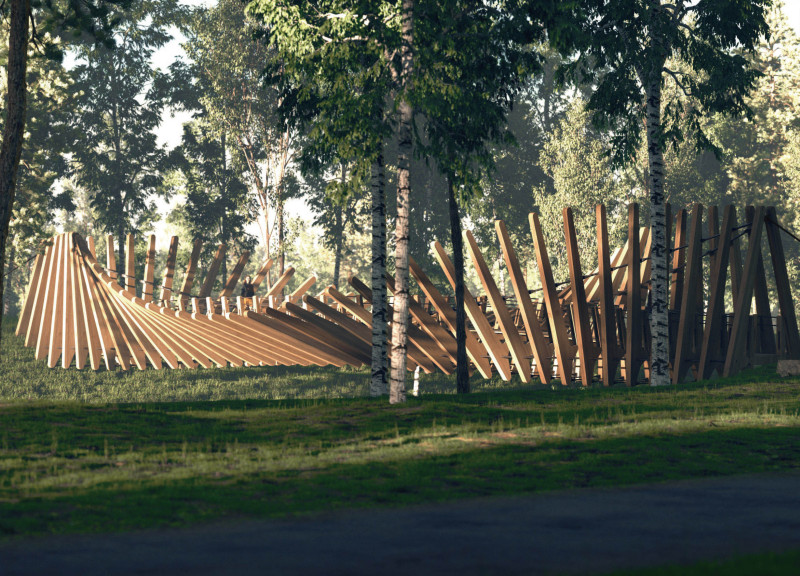5 key facts about this project
The Gauja National Park Footbridge is an important addition to the landscape of Gauja National Park. It connects paths for visitors, enhancing their experience of the natural surroundings. The design focuses on blending the built structure with the environment, capturing the essence of movement found in nature.
Design Concept and Structure
Inspired by the beauty of the park, the Footbridge features a series of timber layers arranged along a smooth curve. This design creates a sense of flow, encouraging exploration. The arching deck rises slightly in the center while widening, allowing visitors to pause and take in the views. This thoughtful arrangement invites deeper engagement with the landscape.
Environmental Integration
The location of the Footbridge has been carefully chosen to work well with existing paths and minimize any impact on the environment. It separates pedestrian and vehicle traffic while maintaining a low profile that respects the natural scenery. The focus on ecological impact ensures that the bridge complements the park's existing beauty.
Material Usage
Timber is used throughout the structure, providing warmth and a natural feel that connects the bridge to its surroundings. Steel is incorporated into the suspension system, offering strength and stability. This combination of materials reflects a commitment to sustainable design practices that align with the park's environmental priorities.
Lighting and Ambiance
Lighting plays a key role in the overall design, enhancing the Footbridge's presence during both day and night. Strategically placed lights under the bridge and along its surface create a welcoming atmosphere in the evening. This approach improves visibility while preserving the natural character of the landscape, making the experience for visitors unique.
As dusk falls, the bridge becomes a part of the changing light, creating patterns of illumination that draw the eye and highlight its graceful lines against the park’s backdrop.





















































